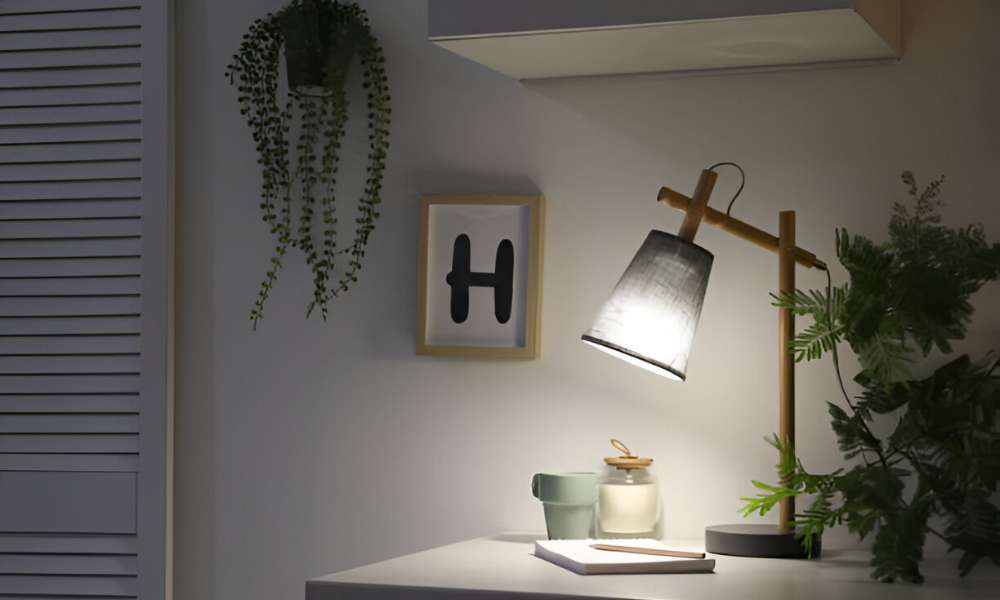I still remember the first time I noticed a jump in my electricity bill. It made me wonder: Does a lamp use more electricity than a ceiling light? It’s a question many Of us have asked, But the answer isn’t always obvious. Ceiling lights might seem like they consume more power, but it depends on the type of lightbulb and its wattage. Let’s take a closer look at how lamps And ceiling lights compare and why understanding their energy use Is important for saving On your bill.
Understanding Power Usage
Power usage is simply how much electricity a light or any device uses. It’s measured in watts. The higher the wattage, the more electricity it uses. When a light stays on longer, It uses more power.
A lamp usually uses fewer watts than a ceiling light. For example, a table lamp may use 40 to 60 watts. In contrast, It can use 60 to 150 watts, Depending on the type. But the important thing is not just the wattage, but how long the light stays on.
Lamps consume energy differently. Incandescent bulbs are energy guzzlers, While LEDs use much less power. No matter if it’s a lamp or a ceiling, Switching to LED bulbs can save a lot of energy.
Lamps vs. Ceiling Lights: What’s the Difference?

Lamps and the ceiling are both used to light up your space, but they do so in different ways. Let’s look at the key differences between the two.
Lamps:
Lamps, like table lamps and desk lamps, are meant to provide focused light. They usually use less energy, ranging from 40w to 100w. I love using a lamp when I need soft, direct light for reading or working.
Ceiling Lights:
These lights are designed to light up larger areas, including chandeliers, recessed, and LED fixtures. They often consume more power, between 60W and 150W, as they’re built to provide whole-room lighting. Remove ceiling light cover no screws to easily access and maintain your lighting fixtures.
Does a Lamp Use More Electricity Than a Ceiling Light?

You may wonder if a lamp uses more electricity than a ceiling light. The answer depends On the wattage of the lightbulb And how long it’s on. Let’s break it down.
Energy Use Comparison
Ceiling lights generally use more electricity than lamps. It typically ranges from 60w to 150W, while lamps use 40w to 100w. However, how long the light is on matters too. A ceiling light that stays on for hours will use more energy than a lamp that’s on for a short time.
How Wattage Affects Energy Use
Wattage is A measure of how much electricity a light uses. The higher the wattage, the more energy it consumes. For example, A 100w lamp will use less power than A 150w ceiling if both are on for the same amount of time.
LED Technology Saves Energy
LED bulbs use far less power than traditional bulbs. A 100w incandescent bulb can be replaced by a 12W LED bulb. This makes A huge difference, whether it’s for a lamp.
Energy-Efficient Lighting
LED bulbs save up To 80% of the energy used by older bulbs. Replacing ceiling lights And lamps with LEDS will help lower your electricity bill. Over time, the savings add up.
Practical Tips for Saving Energy

Saving energy is simple and doesn’t take much time. A few small changes can make a big difference on your bill.
Choose Energy-Efficient Bulbs
LED bulbs are the best for saving energy. They use up to 80% less power than regular bulbs. Swap out old bulbs for LEDS in both lamps and the ceiling, and you’ll notice the savings.
Use the Right Light for the Room
Use lamps for small, focused lighting in cosy spots.They are great for large rooms. Pick the right light based on the room’s size and what you need it for.
Turn Off Lights When Not in Use
Turning off when you leave a room is an easy way to save. It’s a small change, but it adds up. Make it a habit, and you’ll reduce unnecessary energy use.
When Should You Use a Lamp vs. a Ceiling Light?

Best Scenarios for Lamps
Lamps are perfect for small, cozy spaces. Use them when you want focused light, like for reading or working. A lamp in the corner can add warmth and create a relaxing atmosphere.
Best Scenarios for Ceiling Lights
There are ideal for large rooms. They provide bright light, which is perfect for kitchens, living rooms, or hallways. Up the whole room, making them a great choice for right lighting.
Combining Both
Using both lamps and ceiling lights gives you flexibility. It provides overall brightness, while lamps can add cozy, focused light. Combining them lets you adjust for different needs and moods.
Conclusion
To recap, Ceiling lights usually use more power than lamps, But it depends on the wattage. Lamps tend to consume fewer watts, Making them better for small spaces. But both types of lights can Be more efficient with LED bulbs.
Switching to energy-saving LED bulbs can lower your energy usage And save you money

